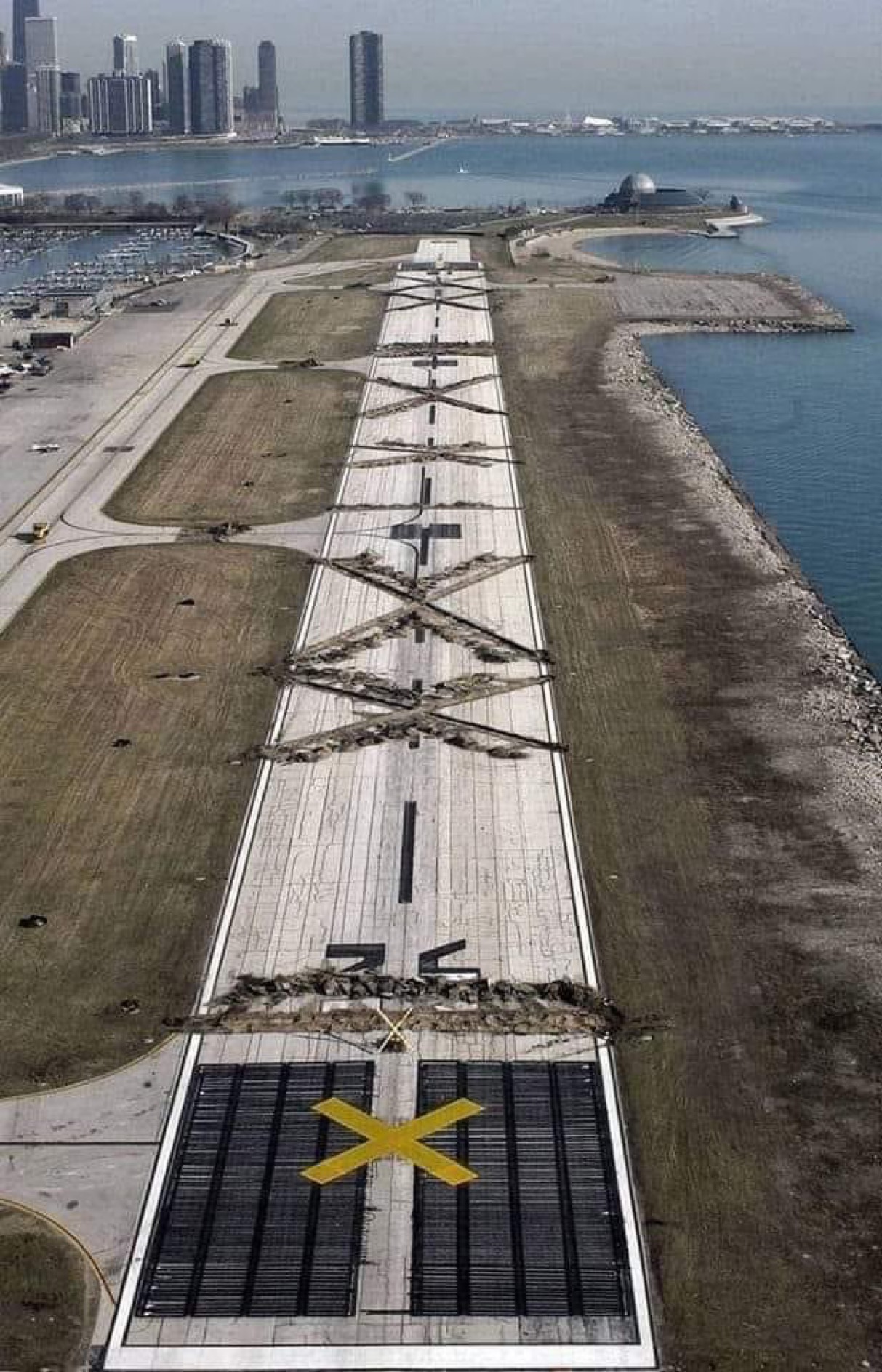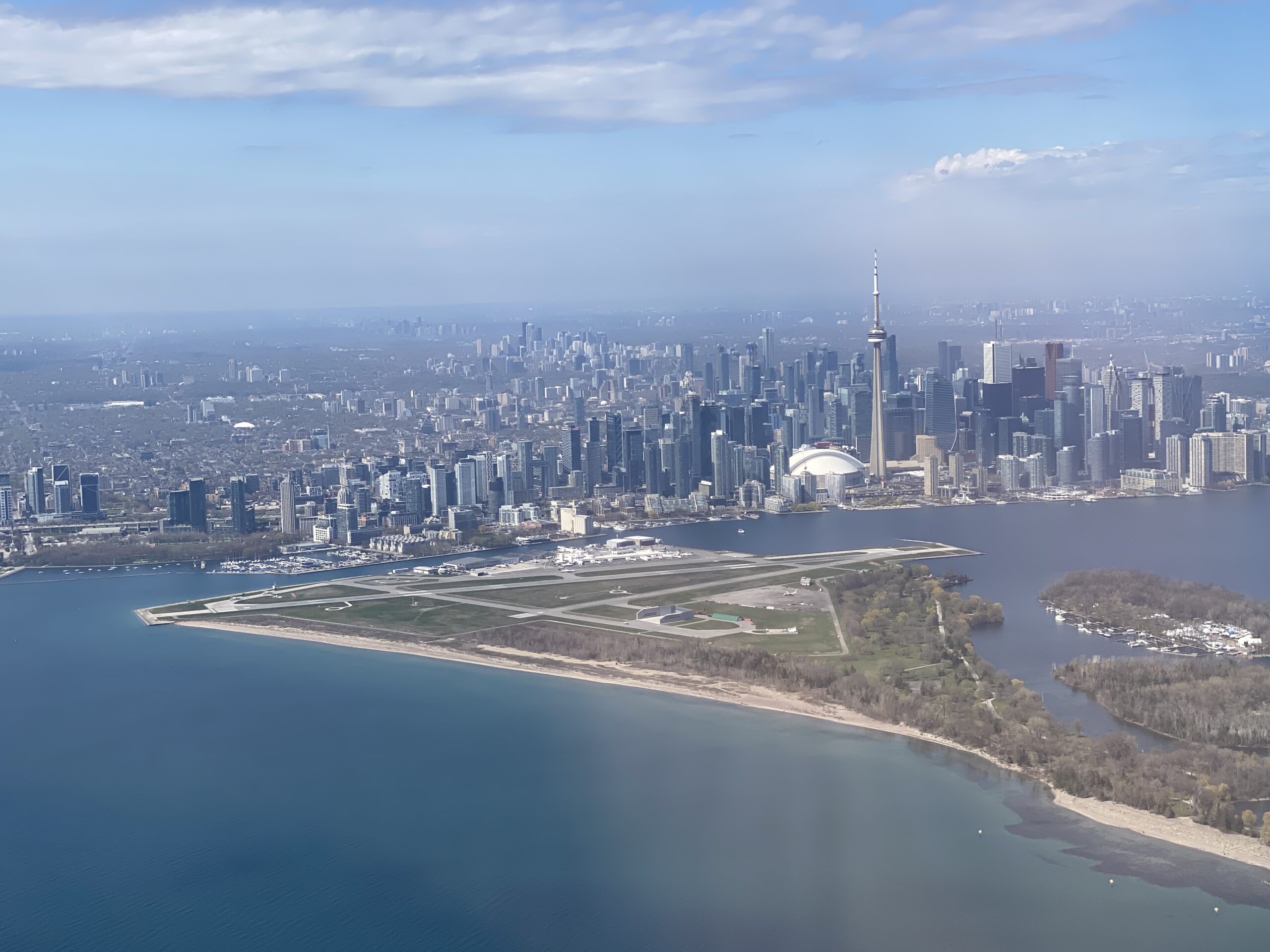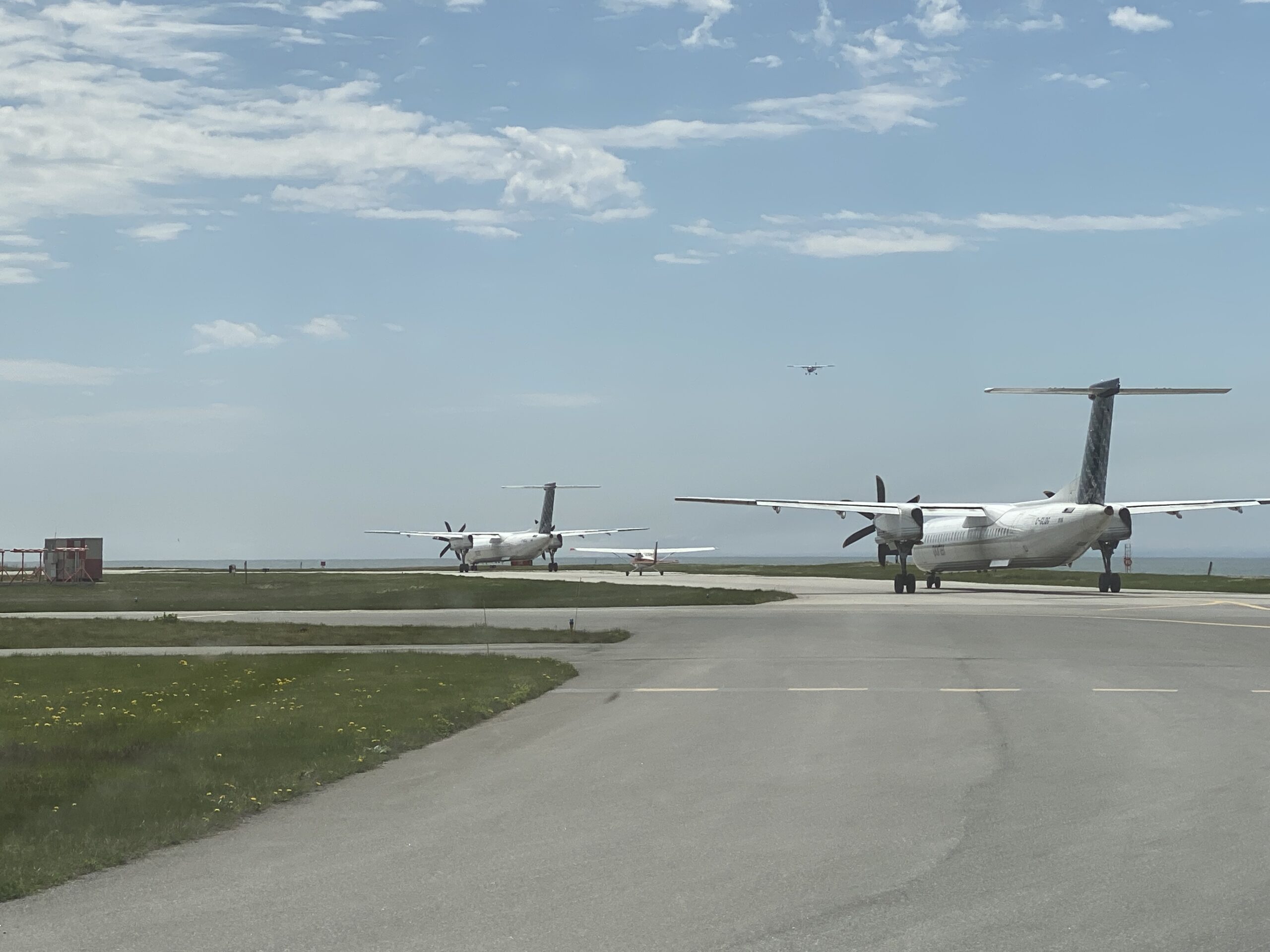21 years ago, Chicago’s iconic downtown airport, Meigs Field, was illegally closed by the local mayor. Meigs was a successful downtown airport just like Billy Bishop Toronto City Airport. Now a few are calling for the closure of Toronto’s downtown airport under the pretext of expanding the city’s parkland. Will Canada see a repeat of a tale of priceless infrastructure destroyed? Or will we learn the hard lesson taught by an attention-seeking Chicago Mayor and his Al Capone moment?
Like Billy Bishop airport, Meigs field was built on an island expanded with landfill on a Great Lake. It was envisioned as the northernmost string of a set of islands by architect and city planner Daniel Burnham in his plan of Chicago. But unlike Toronto’s set of islands that continues to be expanded, the rest of the Chicago atoll was never built. Meigs Field opened in December 1948, and by 1955, it became the busiest single-runway airport in America. Over the years, the airport hosted over a dozen airlines and was an important hub of medivac and other general aviation activity. In 2001, a tentative agreement was struck to expand the airport and keep it going for another 25 years.
Then tragedy struck.

The terror attacks of September 11, 2001, shut down aviation across the world for months. Just as the airport began to recover, a fatal blow was struck by a single man. Chicago’s mayor, Richard M Daley, ordered bulldozers to rumble onto the field under the cover of darkness. In a single night, they inflicted millions of dollars of damage by shredding the airport’s only runway. The mayor’s action left dozens of aircraft stranded and the airport destroyed. Some labelled the event a massacre as it annihilated the airport’s future. Thankfully no people were hurt that night.
The FAA (Federal Aviation Administration) and the regional government were beside themselves with fury at the mayor’s illegal actions. The mayor was eventually forced to acknowledge the abuse of power and pay a $33,000 fine, the maximum allowed at the time. The airport and its fragile ecosystem of aviation businesses were gone. The mayor claimed he wanted to turn the airport into a park. It took years to find the funding to do so.

Compare the tragic story of Megis Field with its Great Lakes twin, Billy Bishop Toronto City Airport.
In 2003, Billy Bishop was also recovering from the effects of the 2001 terror attacks. Yet free enterprise and good governance prevailed to transform Billy Bishop Airport into a jewel in the crown of downtown Toronto, one of Canada’s largest employment zones. Today the airport is the ninth busiest in Canada with 2.8 million passengers enjoying direct flights to 20 cities in North America.
To quote the airport: “Billy Bishop Toronto City Airport generates more than $2.1 billion in total economic output, supports 4,450 jobs, including 2,080 directly associated with the airport’s operations, and facilitates healthcare for Ontarians by providing a base for medevac services connected to local hospitals.”
Billy Bishop Airport paid $74 million dollars in taxes last year. That is equal to 20 percent of Toronto’s parks and recreation budget. After years of investing in green space, Toronto now has 3 million trees in 1473 parks, 839 playgrounds and 137 community centres. Toronto continues to add new greenspace and enhance its green canopy of city-managed trees. The Toronto and Region Conservation Authority (TRCA) manages Tommy Thompson Park, a 500-hectare park located on a man-made peninsula in the harbour. Originally called the Leslie Street Spit, the area continues to be expanded with landfill and now extends five kilometres into Lake Ontario. With continued capital investment and good management just imagine what Toronto’s parks will look like 25 years from now.
In the next 25 years, the number of flights worldwide is expected to double and achieve net zero emissions. In the 21st century, a growing web of interconnected airports has become the lynchpin of a global free market economy. By value over 1/3 of all trade in goods and services moves by air. Airports like Billy Bishop are a critical part of a growing global economy that has lifted half the world out of extreme poverty by lowering the cost of goods for the other half. Toronto’s downtown airport is an economic engine that will grow with the city. It is creating the prosperity that is helping to fund the expansion of parkland including on new landfill in Toronto harbour.
Yet even today a few are still calling for airports to be closed and turned into greenspace. With little more than made-up facts and trendy social media posts, their arguments ignore the reality of aviation’s critical importance in a modern economy. The lobbying for the green gentrification of airports exemplifies the NIMBY (Not In My Back Yard) challenge to good governance in a democracy.

An example of NIMBY misinformation was recently published by a group called the York Quay Neighbourhood Association (YQNA) in a March 2024 newsletter. It promoted wishful thinking social media content that claims the airport is losing money and has no future. It claims that traffic at Billy Bishop airport is in decline and that a key user, Porter Airlines, is reducing flights.
The reality is that the airport has roared back from a pandemic-enforced slowdown stronger than ever. Porter Airlines is expanding its routes and purchasing new aircraft. Porter has repeatedly asked the airport to lift a ban on jets and expand its runway to accommodate more growth. Work that The Toronto Ports Authority proposed can be completely funded by increasing passenger fees.
A new report on the future of the airport predicts that it will double its pre-pandemic economic activity in the years ahead. The airport is also expected to host new net zero emissions aviation technologies including electric and sustainable fuel-powered aircraft. To handle the increase in demand, the airport needs to expand its runway, terminal and ramp space.
Unfortunately, Billy Bishop is not the only airport under threat from misinformation. Nearby, a new airport is being planned in Pickering to accommodate the region’s rapid growth. It is similarly under attack by a wishful thinking few. Further east, some are calling for the closure of an airport run by the City of Oshawa.
What happened in Chicago to Megis Field was a tragedy for Chicago. But it is not unique. Unless citizens and their elected officials are vigilant, NIMBY politics can destroy not just our airports but also our future prosperity. What happened in Chicago can happen anywhere, even in Canada.
Related posts:
The Goals and Tactics of NIMBYism – Friends of Pickering Airport
References:
Billy Bishop Toronto City Airport debate to land at council (thestar.com)
YQNA – York Quay Neighbourhood Association
Toronto Parks, Forestry and Recreation Division – Wikipedia
Toronto-s-Downtown-Airport_RFlorida.pdf (portstoronto.com)